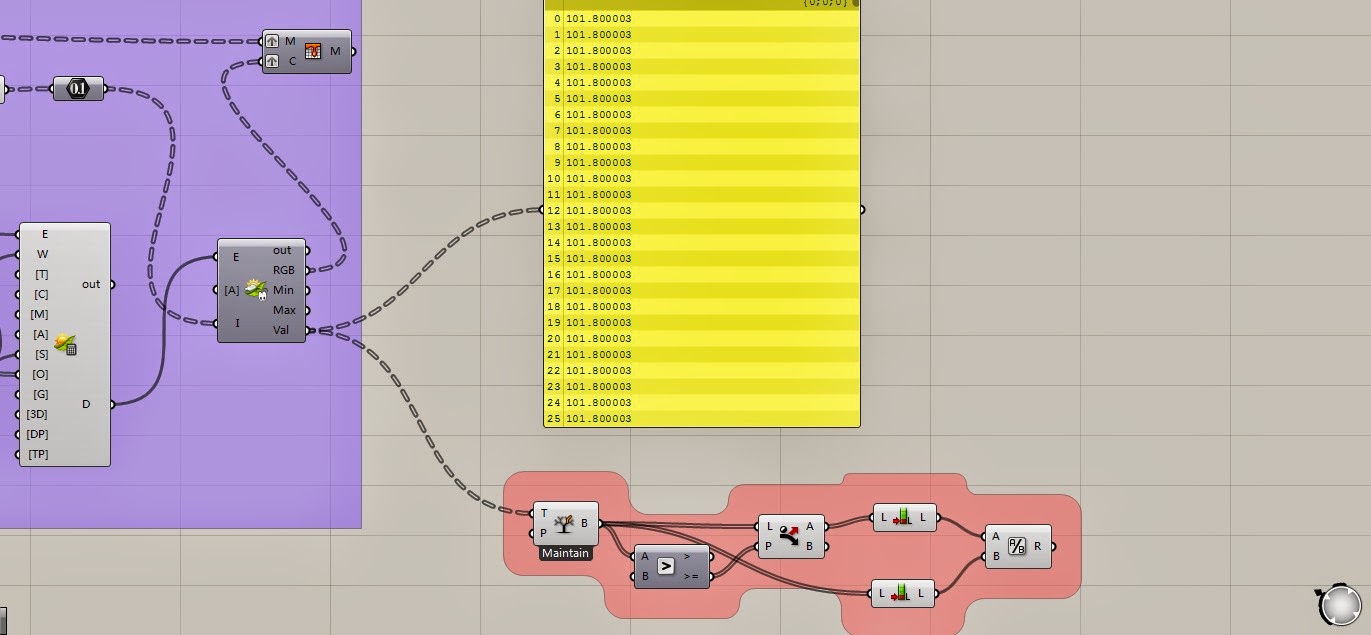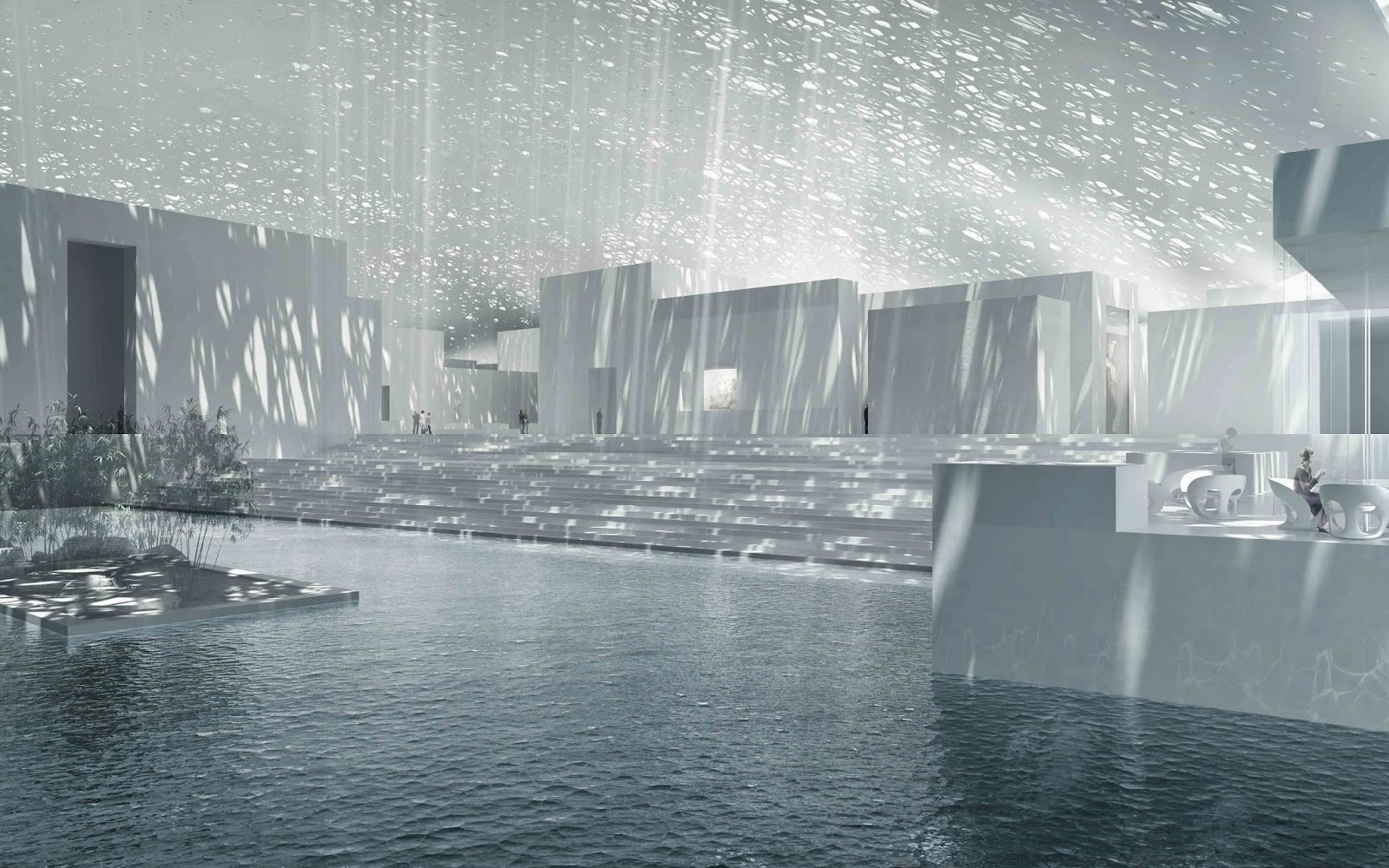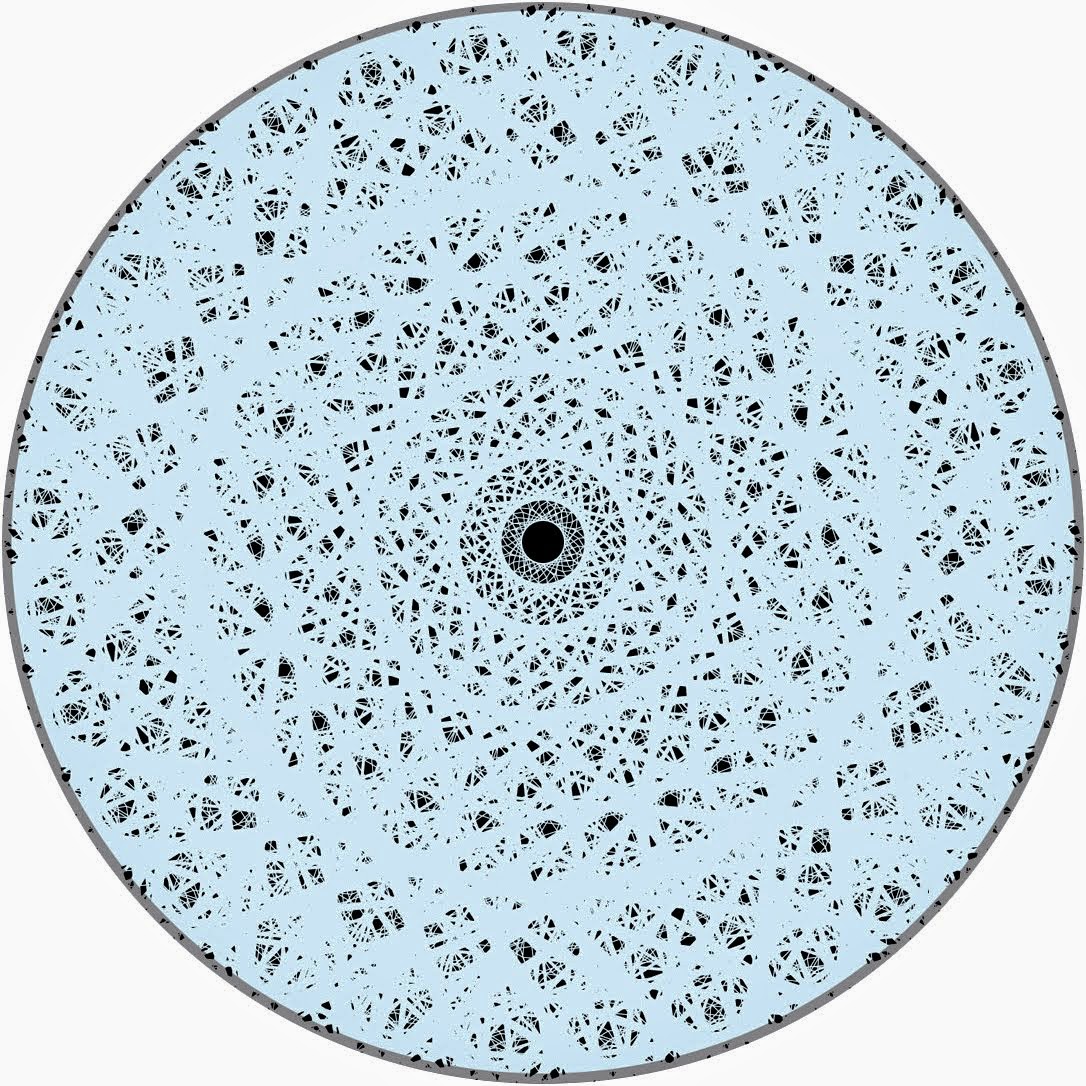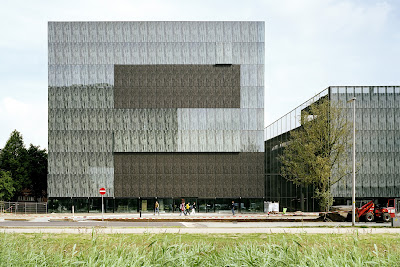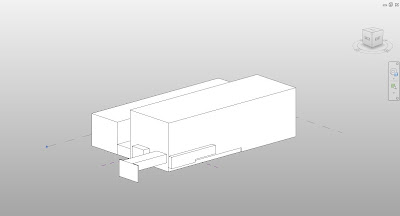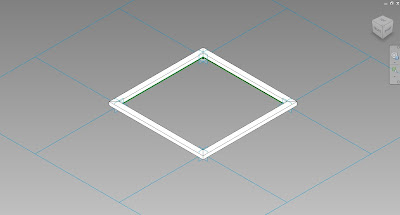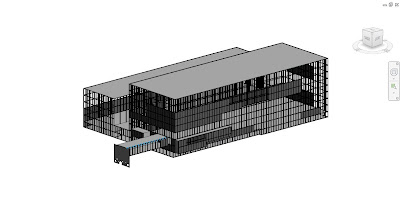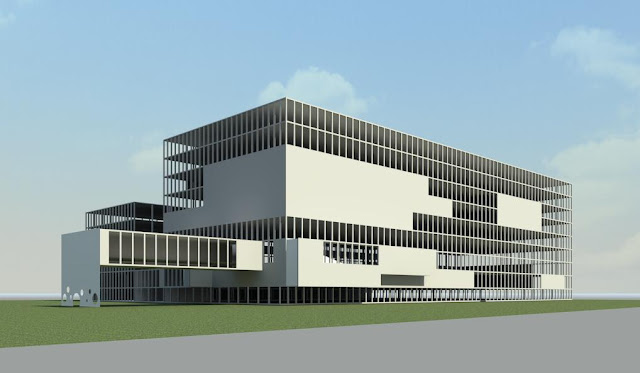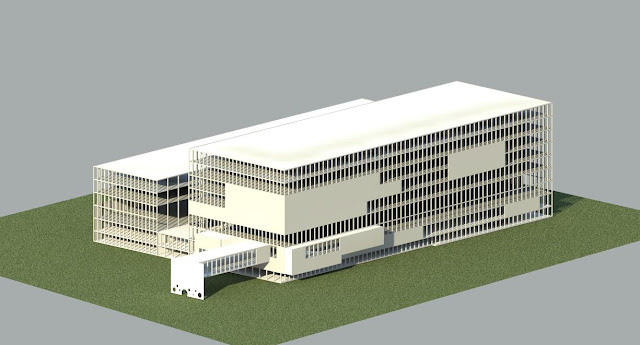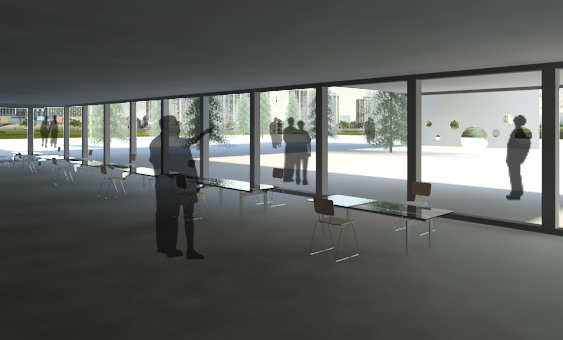Austin Music Center
Spring 2014
Mark Liang
Background
For project 2, I modeled the skin for my final study. The topic of my project is a electronic music center. This is the image of my project before, now the facade looks a little bit boring. I want to make it relate to both the program and context, so I decide to redesign the facade of my building. The analysis was conducted through grasshopper and Ecotect, which provided data used to determine the size and locations of the openings on my facade.
Ecotect Analysis
To
prepare for Ecotect analysis, I created the basic shape of my building in my
building. Then I converted it into mesh in grasshopper.
Then
I imported the mesh into Ecotect where the insulation analysis was conducted. The
yellow areas are where heat loss is minimal and blue is where heat loss is
greatest. The
more subdivisions I created, the more accurate the data.
Forming the Panels
I pick up one surface from my project
and did a research based on this surface. I divided the mesh into a grid. This grid
can be controlled in both the vertical and horizontal directions. These
divisions come from the first phase.
Then, I created the paneling by multiplying the
points on the grid and generating a list of random numbers that would select
what would be solid/void.
The selection is based on a percentage that is
controlled with the slider.
I’m trying to do one more step .I want to divide these numbers into two groups based on the heat loss. The area where the heat loss is small will be void, the area where the heat loss is large will be solid. However, the problem is all numbers are the same. if it works, this step should replace this process.
Using grasshopper, the thickness of the panels can also be adjusted.


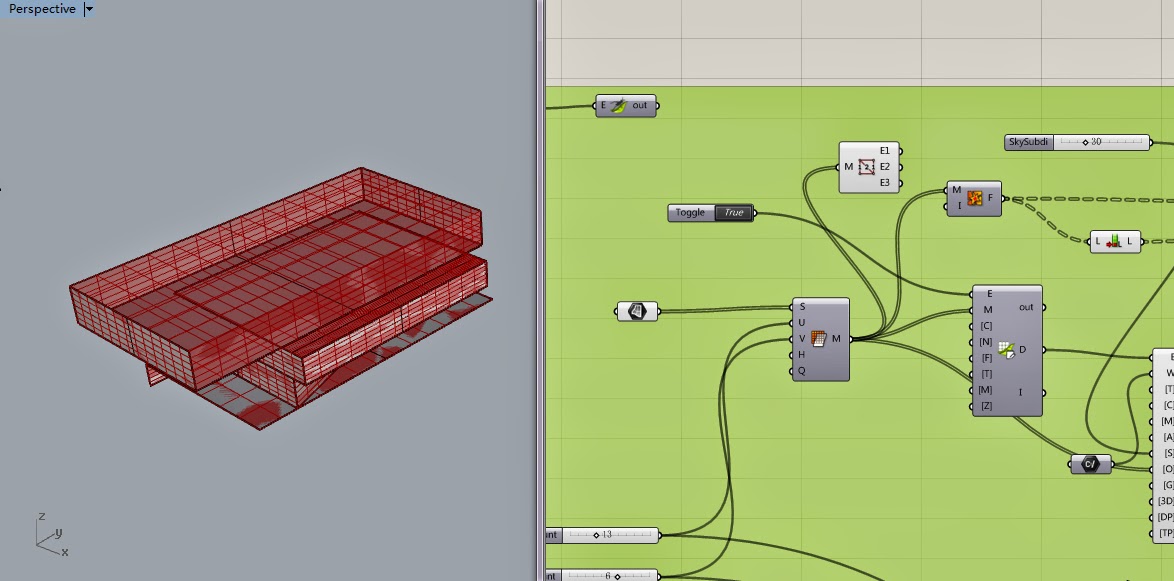
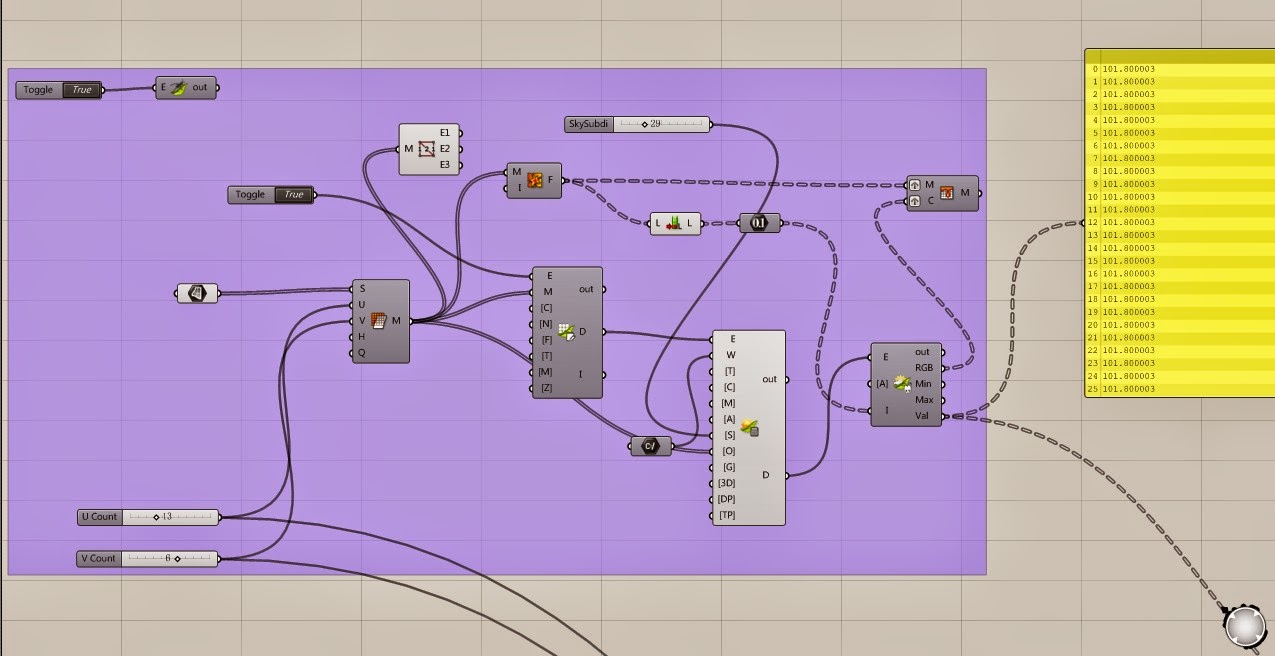
U%5D%5DYC8.jpg)


